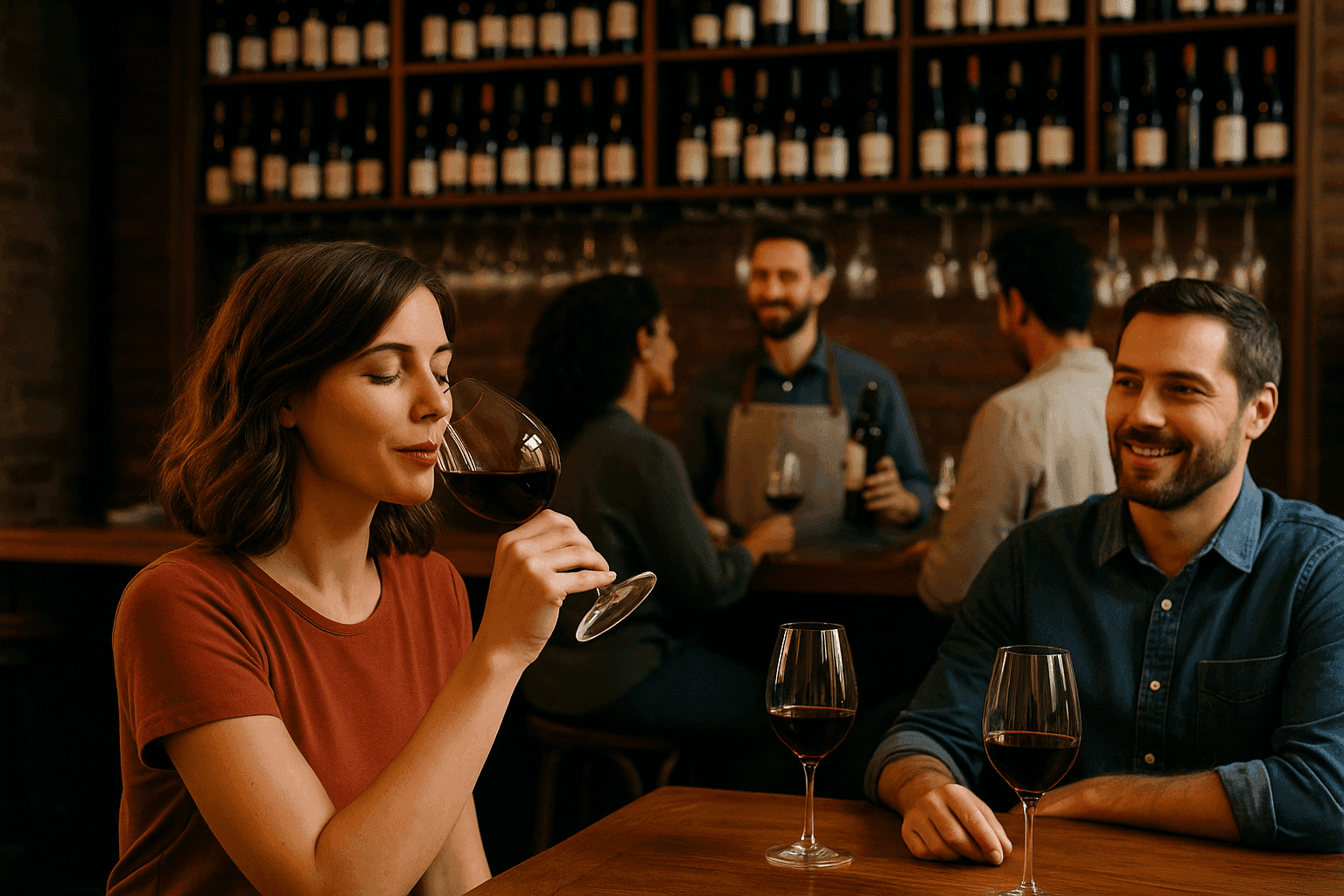Wine Bars Transform How Americans Experience Wine in 2025
The American wine bar has evolved far beyond its European roots, becoming a cultural phenomenon that's reshaping how consumers discover, learn about, and enjoy wine. As search interest in wine bars continues to grow, these establishments are filling a crucial gap between casual dining and fine dining, offering curated experiences that appeal to both novices and connoisseurs.
The Modern Wine Bar Revolution

Today's wine bars bear little resemblance to their predecessors from a decade ago. Gone are the stuffy, intimidating spaces that once deterred casual wine drinkers. In their place, a new generation of wine bars emphasizes approachability, education, and community. These venues typically feature 30-50 wines by the glass, compared to traditional restaurants' 10-15 options, utilizing preservation systems like Coravin to offer premium pours without committing to full bottles.
The shift reflects changing consumer preferences. Millennials and Gen Z wine drinkers prioritize experiences over products, seeking venues that offer storytelling alongside their Syrah. Wine bars respond with themed flights, winemaker events, and staff trained as educators rather than mere servers.
Curated Selections Drive Discovery

Wine bars excel at curation, often focusing on specific regions, styles, or philosophies. Some specialize in natural wines, others in small-production domestic bottles, and many rotate their selections weekly. This approach transforms wine selection from an overwhelming choice into a guided journey.
The by-the-glass model proves particularly powerful for discovery. Consumers can sample a $200 Burgundy for $40 a glass or explore orange wines without purchasing full bottles. This accessibility has democratized fine wine while introducing adventurous drinkers to categories they might never encounter in retail settings.
Educational Experiences Attract New Demographics

Wine education has become a cornerstone of the modern wine bar experience. Many establishments offer structured tastings, wine classes, and food pairing sessions that transform casual visits into learning opportunities. Some wine bars employ sommeliers who conduct tableside tastings, explaining terroir, production methods, and flavor profiles in accessible language.
This educational component attracts younger consumers who view wine knowledge as cultural capital. Wine bars report that customers aged 25-40 comprise their largest demographic, with many visiting specifically for guided tastings and wine education events.
Technology Enhances the Experience

Digital innovation has transformed wine bar operations and customer experiences. QR code menus provide detailed tasting notes and producer information. Some establishments use apps that remember customer preferences and suggest new wines based on previous selections. Self-serve wine dispensers, loaded with prepaid cards, allow customers to create their own tasting flights.
Social media integration proves crucial for marketing. Wine bars leverage Instagram-worthy presentations, from artistic cheese boards to dramatic wine walls, creating shareable moments that drive organic marketing.
Food Programs Elevate the Offering
While wine remains the focus, food programs at wine bars have become increasingly sophisticated. Rather than full dinner menus, most offer curated small plates designed to complement wine. Charcuterie boards, artisanal cheeses, and seasonal vegetables dominate menus, with many bars sourcing from local producers to mirror the terroir-driven philosophy of their wine programs.
This food-and-wine synergy creates longer visits and higher check averages. Customers typically spend 90-120 minutes at wine bars, compared to 60-75 minutes at traditional bars, ordering multiple rounds of both wine and food.
Community Spaces Foster Loyalty
Successful wine bars function as community hubs, hosting book clubs, networking events, and private tastings. Regular programming creates predictable traffic patterns and builds loyal customer bases. Many offer membership programs providing discounts, exclusive tastings, and first access to allocated wines.
The communal atmosphere distinguishes wine bars from restaurants. Communal tables, bar seating, and standing areas encourage interaction between strangers, creating social experiences that extend beyond the wine itself.
Looking Forward
The wine bar trend shows no signs of slowing. Industry analysts project continued growth, particularly in secondary markets where wine culture is still developing. As Americans become more sophisticated wine consumers, wine bars will likely continue evolving, potentially incorporating retail components, expanding educational programs, and leveraging technology to create increasingly personalized experiences.
For wine enthusiasts and industry professionals alike, wine bars represent the future of wine consumption in America—spaces where discovery, education, and community converge around the shared appreciation of wine. Their success demonstrates that American wine culture has matured beyond simple consumption into a nuanced appreciation of wine as both beverage and cultural experience.
